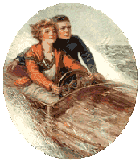|
Solar boats are electrical boats, with independent, quiet and clean engines, whose batteries store free energy from the sun.
On the seas and inland waters as well as along their banks there are only a few connections to public electricity mains. People who live on inland waterway crafts, sailing boats, space stations and houseboats, are dependent on batteries, just as the owners of electrically propelled boats. But batteries sometimes discharge and must be replenished. One of the most elegant solutions for this is solar electricity. Solar modules on a ship can charge the batteries on the spot - cleanly and efficiently with free energy from the sun.
Solar electricity plants are reliable and durable. There are ever more areas of application for solar electricity, due to lowering prices and improving technologies. Right now we have Photovoltaic modules which are set in the roof of the ship (see picture below).

Aquabus 1050 - MW LINE, 20 person water taxi in Lausanne. Electric motors are further developed than combustion engines, as they have been around for a longer time.
Cruise ships, submarines and torpedos use electrical motors for propulsion. The reasons for this are the lack of noise and oscillation, as well as the reliability. Large passenger liners, aiming to provide maximum travelling comfort, do not however store their energy in batteries, but produce it through the use of many small Diesel generators.
2. History of e-boats starting from 1838
1838 Professor Moritz Jacobi in Russia experiments with a 24' long, electrically propelled boat.
1880 Gustav Trouve, a Paris chemist, invents a removable electrical Aussenborder.
1882 At the yacht club de France the first e-boat-record was set with a speed of 24 kn over a distance of 26 kilometers.
1883 During the Viennese world exhibition the "Beni" electrically carries 45 passengers on the Danube.
1886 The 32' "Volta", an electrical boat, crosses the English channel from Dover to Calais and back in 8 hours.
1887 Isaak Peral develops in Spain a submarine with 480 batteries and two 30 HP engines. Since the Spanish navy does not show interest, the development continues in France.
1888 The "Viscountess Bury" is the largest e-boat for 84 passengers. In the same year the Chinese Empire orders 15 m long boats, capable of 18 Km/h.
1889 The first 6 electrical charter boats run in England on the Thames.

Advertisement for the first electrical electic canoe from the year 1892
1892 The world exhibition in Chicago carries more than one million visitors on 55 e-boats over 200.000 miles without a breakdown, bringing $300,000 in profit.
1893 Kerbey Bowen patents an e-auxiliary engine for sail yachts with the batteries in the keel.
1901 Three shipowners operate approx. 110 e-boats in the charter and tax enterprise aon the Thames.
1902 35 electrical submarines are in the service of the French Navy.
1903 250 e-boats from 5,5 to 12 m. are delivered in New Jersey. Customers include English royalty, Tzar Nicolaus II, Grand Duke Alexander of Russia, Mr Westinghouse, Baron Rothschild and JJ Astor.

MINA, an electric yacht from England in 1900
1939 15 passenger liners operate electrically on the Bavarian king lake; today 21 passenger ships, carry 93 passengers at 11 Km/h.
1948 Captain Hirst builds a boat for 20 passengers, which carries over 26.000 travellers on the English rivers until 1981. A similar boat for 49 passengers is used in Sweden.
1968 The "Duffi 20" is developed in California; Today there are over 1000 units.
1981 The restoration of a boat of 1896 gave birth to the idea of transfering the timeless beautiful lines to modern materials, and today "Classic boats" are on the market.
1982 Interest in e-boats increases, now motivated by the move toward environmental protection. The Electric Boat Association EBA is created. Carriers include power supply works, the British offices for water way, environmental protection authorities and National parks. Electrical boats receive 25% discount on the quite substantial channel and air-lock fees in England.
1989 Lady Fiona, Countess of Arran, at the age from 71 years holds the world record for e-boats: 81.83 Km/h in a 15' hydroskimmer.
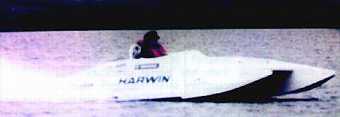
The Countess of Arran sets the 1989 world record
1990 Vaporetto Electrico sets up a service in Venice for 230 passengers.
1993 The first German solar boat championship occurs.
1994 20 different "Classic" models appear in Germany.
1995 The first solar boat European championship is organised. It takes place in La Rochelle, on the Atlantic, in Switzerland on three lakes, as well as in Berlin and Hamburg. Canoe "Carl" wins with a 1,5 KW electric motor.
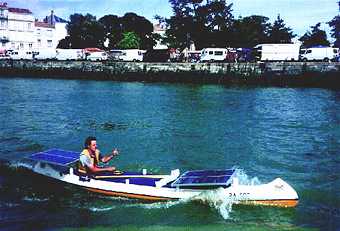
Canoe "Carl" 1995 with Thomas Meyer in La Rochelle
This boat won until 1997 with the simplest technology, i.e. with 5 years old heavy lead acid car batteries and a 30 years old electric motor, but with optimized propeller technology in a slim, optimized canoe.
1995 A solar boat gas station opens in the context of the world climate conference. 20 solar boats with 2-8 seats are in the rental business enterprise (fig. 7)
History shows that e-boats are nothing new, but solar drive systems are an interesting development. Onboard solar generators allow independence from the plug socket.
Solar plants produce a safe, self-sufficient source of energy. Emission-free drive systems not only of protect the environment, but they increase the quality of the boating experience - for example, in protected areas it is possible to approach water birds very closely.
E-drives are very efficient. The torque exists over the entire speed range, so that large propeller diameters can be driven slowly. Thus, shaking, rattling and the stench of fuel are eliminated, so that one can breathe deeply, enjoy conversation and experience more pleasure in the ride. The beautiful animal world is hardly disturbed and can be observed from a short distance.
Solar energy can be harnessed for the unrestricted travel of larger sail yachts if an vegetable oil generator is used. For port maneuvers etc. the batteries, loaded by solar energy, are sufficient.
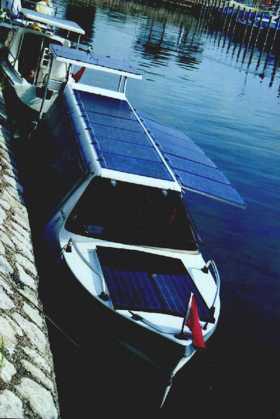
Solar boat of a 1995 Regatta 2.5 KW of engine power
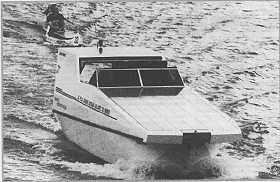
Solar yacht with engine power over 5 KW
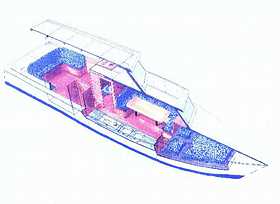
Solar yacht 10 m x 2.5 m, 5-8 KW electrical motor, 4-8 persons
Design: January Petzold - Construction: Thomas Meyer

Aquabus 2050 MW LINE: 60 persons solar electrical hybrid passenger ship
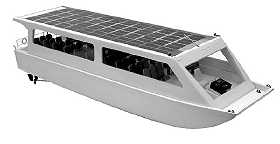
Photo solar bus model Alstersonne "on a scale 1:17 as working model
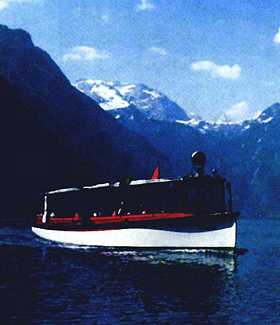
93 person passenger ship "Watzmann " - Royal Bavarian sea-shipping

140 Person Solarschiff
Thanks to Dirk Tegtmeyer and Thomas Meyer www.solarschiff.de
|
